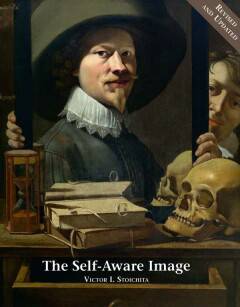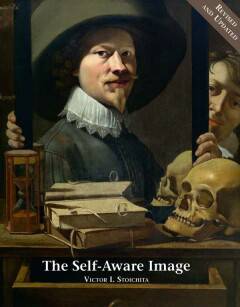
En raison d'une grêve chez bpost, votre commande pourrait être retardée. Vous avez besoin d’un livre rapidement ? Nos magasins vous accueillent à bras ouverts !
- Retrait gratuit dans votre magasin Club
- 7.000.000 titres dans notre catalogue
- Payer en toute sécurité
- Toujours un magasin près de chez vous
En raison de la grêve chez bpost, votre commande pourrait être retardée. Vous avez besoin d’un livre rapidement ? Nos magasins vous accueillent à bras ouverts !
- Retrait gratuit dans votre magasin Club
- 7.000.0000 titres dans notre catalogue
- Payer en toute sécurité
- Toujours un magasin près de chez vous
The Self-Aware Image
An Insight Into Early Modern Meta-Painting
Victor I Stoichita
Livre relié | Anglais
318,95 €
+ 637 points
Description
The notion of the painting as an art object is a relatively recent invention. The Self-Aware Image offers an impressive and complex account of the origins and development of this invention from the late Renaissance through the end of the baroque age. In comparison to the old image characterized by its preeminently liturgical function and its display in a predetermined space, the painting as the new image is increasingly autonomous and movable. As a modern art object, the painting becomes the focus of an aesthetic contemplation through its insertion into a gallery or a collection. As a result of the Protestant iconoclasm and the advancement of scientific knowledge, the essence and role of the image is put into question and thematized not only by theologians and scholars, but especially by artists. The painting thus becomes a field of visual experimentation in which art reflects on itself, its potential, its limits, its truth, and its nothingness. The representation of windows, doors, niches, mirrors, and paintings enable artists to embed the image within the image, to frame the fictiveness of the image in order to deceive, puzzle, and challenge the beholder. The pictorial devices through which artists introduce their authorial self into the image and stage the making of the image itself form the foundation of a new poetics: the poetics of metapainting. First published in French in 1993, Victor Stoichita's Self-Aware Image has become a classic of the history of art. This new, updated, and improved English edition marks the twentieth anniversary of a work that radically changed the perception of seventeenth-century art and that constitutes an ever-valid reference for contemporary scholarship. An introduction by Lorenzo Pericolo illustrates the great importance of the book for our comprehension of baroque painting.
Spécifications
Parties prenantes
- Auteur(s) :
- Editeur:
Contenu
- Nombre de pages :
- 337
- Langue:
- Anglais
Caractéristiques
- EAN:
- 9781909400115
- Date de parution :
- 02-09-15
- Format:
- Livre relié
- Format numérique:
- Genaaid
- Dimensions :
- 226 mm x 287 mm
- Poids :
- 1769 g

Les avis
Nous publions uniquement les avis qui respectent les conditions requises. Consultez nos conditions pour les avis.






